Frequency List for SHTF Survivalist Radio Communications and Preppers
Information about common frequencies and channels for tactical, emergency, and survival for HAM, CB, MURS, GMRS, PMR, Marine, and other radios.

SHTF Survivalist Radio Frequency List and Charts for the doomsday prepper…

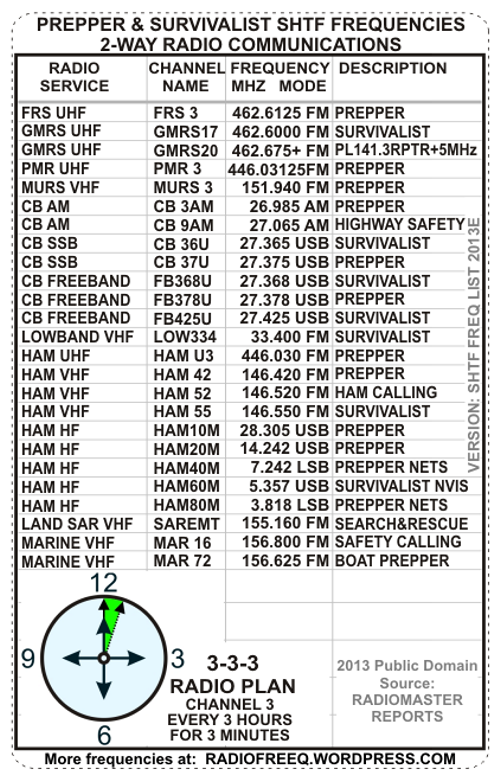
CLICK TO PRINT WALLET SIZE – SHTF FREQUENCY LIST
Prepper Survivalist Channel Frequencies Basic Chart
VHF UHF HF CB MARINE HAM FRS GMRS PMR MURS FM SSB AM
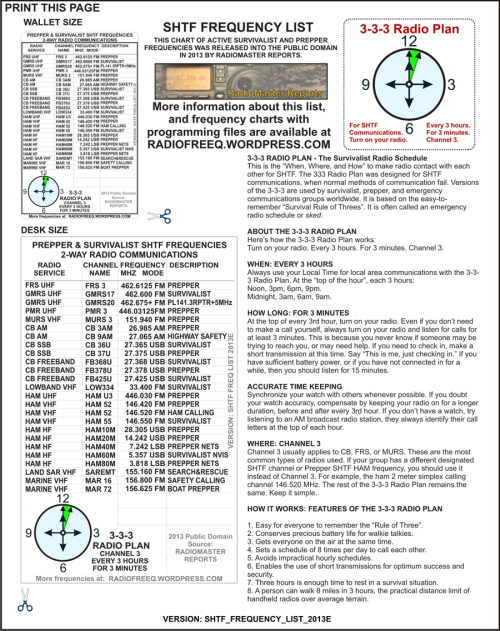
The original source of this article and chart is RadioMaster Reports.
==== SHTF SURVIVALIST RADIO FREQUENCY LIST BASIC CHART ==== === BAND === | CHAN. | FREQUENCY MHZ| DESCRIPTION ============ | ===== | ============ | ================== FRS UHF ==== | FRS 3 | 462.6125 FM =| PREPPER GMRS UHF === |GMRS17 | 462.6000 FM =| SURVIVALIST PMR UHF ==== | PMR 3 | 446.03125FM =| SURVIVALIST PREPR MURS VHF === |MURS 3 | 151.9400 FM =| SURVIVALIST PREPR CB AM ====== |CB 3AM | 026.9850 AM =| PREPPER CB AM ====== |CB 9AM | 027.0650 AM =| HIGHWAY SAFETY CB SSB ===== |CB 37U | 027.3750 USB | SURVIVALIST PREPR CB FREEBAND= |FB425U | 027.4250 USB | SURVIVALIST PREPR LOWBAND VHF= |LOW334 | 033.4000 FM =| SURVIVALIST HAM UHF ==== |HAM U3 | 446.0300 FM =| PREPPER HAM VHF ==== |HAM 42 | 146.4200 FM =| PREPPER HAM VHF ==== |HAM 52 | 146.5200 FM =| HAM CALLING HAM VHF ==== |HAM 55 | 146.5500 FM =| SURVIVALIST HAM HF ===== |HAM10M | 028.3050 USB | SURVIVALIST PREPR HAM HF ===== |HAM20M | 014.2420 USB | PREPPER HAM HF ===== |HAM40M | 007.2420 LSB | PREPPER HAM HF ===== |HAM60M | 005.3570 USB | SURVIVALIST NVIS HAM HF ===== |HAM80M | 003.8180 LSB | PREPPER LAND SAR VHF |SAREMT | 155.1600 FM =| SEARCH AND RESCUE MARINE VHF = |MAR 16 | 156.8000 FM =| SAFETY CALLING MARINE VHF - |MAR 72 | 156.6250 FM =| BOAT PREPPER The source of this chart is RadioMaster Reports. Updated 2015. Entered into public domain. Free to copy.
 DOWNLOAD
DOWNLOAD
SHTF SURVIVALIST PREPPER FREQUENCY LIST
HF VHF UHF CSV FILE FOR PROGRAMMING RADIOS
Background Notes and History of These Frequencies
Reference: First-hand physical research, correspondence, and open public domain sources 1997-2013. Updated NOV-2013. The basic SHTF Survivalist Radio Frequency List chart was entered into the public domain 2013 by Radiomaster Reports.
Low Band VHF Frequencies:
LOWBAND VHF | LOW334 | 033.4000 FM | SHTF SURVIVAL
33.4 MHz is an ancient Low Band VHF FM itinerant business channel with a 1 watt limit. Popular among reenactors, survivalists, and bulletproof-radio enthusiasts using old military surplus manpacks or military handheld sets on this channel (especially PRC-77). The reason they use 33.4 is probably because it is the only low power itinerant channel that old green manpacks can select with their 50 kHz or 25 kHz channel spacing dials. At low power in the field, they aren’t bothering anybody. Useful for patrols and tactical communications. All scanners can receive this channel.

Preppers Test Out Military Surplus Low Band VHF Radios on SHTF Survival channel 33.400 MHz FM Simplex
Some interesting older “green” military surplus radios common for Low Band VHF frequencies:
Military manpack set PRC-9, AN/PRC-9 (27.0-38.9 MHz FM) continuously tunable
Military manpack set PRC-10, AN/PRC-10 (38.0 to 54.9 MHz) continuously tunable
Military manpack set PRC-77, AN/PRC-77 (30-52.95; 53-75.95 MHz FM) channel spacing 50 kHz
Military manpack set PRC-25, AN/PRC-25 (30-52.95; 53-75.95 MHz FM) channel spacing 50 kHz
Military handheld set PRC-68, AN/PRC-68, PRC-68A, PRC-68B (30-79.975 MHz FM) channel spacing 50/25/12.5 kHz
Military handheld set RT-1547/PRC-126, AN/PRC-126 (30-88 MHz FM) channel spacing 25 kHz
Military handheld set AN/PRC-128 (30-88 MHz FM) channel spacing 12.5 kHz
Military manpack set AN/PRC-119 (30-87.95 MHz) channel spacing 25KHz
Military radio set AN/PRC-117 (30-90 MHz) channel spacing 25KHz
High Band VHF Frequencies:
MURS VHF | MURS 3 | 151.940 FM | MURS PREPPER PRIMARY
151.940 MHz FM is the MURS Prepper channel, known as MURS Channel 3. Multi-Use Radio Service (MURS) is an unlicensed two-way radio service similar to CB but on VHF FM. It is in wide use by preppers and survivalists. VHF has longer distance range in rural and suburban areas than either FRS or GMRS. Useful for mobile, base, patrols, practice drills, and tactical communications. Most scanners can receive this channel.
MURS VHF | MURS 4 | 154.570 FM | MURS PREPPER
154.570 MHz FM is the MURS Survivalist channel, known as MURS Channel 4 or the Blue Dot ☀ Channel. Multi-Use Radio Service (MURS) is an unlicensed two-way radio service similar to CB but on VHF FM. It is in use by some preppers, and has much better distance range in rural and suburban areas than UHF, FRS or GMRS. Useful for mobile, base, patrols, and tactical communications. Most scanners can receive this channel.
LAND SAR VHF | SAREMT | 155.1600 FM | SEARCH & RESCUE
155.16 MHz FM Simplex is Emergency Only. SAR (Search And Rescue) National interoperability channel in USA for ground search teams. It is widely used by government and civilian SAR teams for field communications and interaction with governmental, law enforcement, or fire operations in the field. This channel is also known as Ground SAR, Land SAR, and identified in agency radios with the channel name SAR WFM or SAR NFM. It requires an FCC license to transmit on it, and should never be used by unlicensed operators, except in life-threatening emergency to communicate with a Search & Rescue unit. All scanners can receive this channel.
MARINE VHF | MAR 16 | 156.8000 FM | SAFETY CALLING
156.800 MHz FM Simplex is VHF marine channel 16, the international primary Marine Safety, Emergency, and Distress guard channel worldwide. It is widely used and monitored by all boats, ships, and watercraft. Coast Guards monitor this channel, and it is audio-recorded in major ports. All scanners can receive this channel.
MARINE VHF | MAR 72 | 156.6250 FM | BOAT PREPPER
156.625 MHz FM Simplex is VHF marine channel 72, an international ship-to-ship or HT channel worldwide. It is widely used on sailboats, motor boats, yachts, and watercraft. It is designated for non-commercial use, is common for HT-to-HT informal communications, and is normally clear of commercial shipping or port operations. It is usually not monitored by coast guards, but it is audio-recorded in major ports. All scanners can receive this channel.
HAM VHF | HAM 55 | 146.5500 FM | HAM SURVIVALIST SIMPLEX*
146.55 MHz FM Simplex is the primary VHF Ham Survivalist local channel. It is one of very few ham radio 2 meter frequencies widely coordinated for FM-Simplex-only throughout USA. It is widely available to Technician basic ham license (or higher) ham operators in USA. It is popular among survivalists because it is the only coordinated 2 meter simplex channel compatible with bulletproof military surplus radios (AN/PRC-127, etc) and forest-fire radios (Bendix HTs, etc). These types of radios have 25kHz channel spacing, and are in wide use by ham radio survivalists/preppers. Useful for patrols and tactical communications. All scanners can receive this channel.
HAM VHF | HAM 52 | 146.5200 FM | HAM CALLING SIMPLEX
146.52 MHz FM Simplex is widely known as the ham radio 2 meter Calling Frequency. It is the most widely monitored simplex frequency in USA, but it should not be depended upon for emergency 911 type calls, because there are no organized first-responders on it. It is widely available to Technician basic ham license (or higher) ham operators in USA. Known by most hams as 52 Simplex, it is the channel for the Wilderness Protocol in which hams often monitor it while in backcountry. The Long Tone Zero or LTZ protocol, applies on 52 Simplex, in which an emergency call may be transmitted at the top of the hour with the Zero key on the DTMF keypad being held down and transmitted for a long time prior to the voice call to attract attention. It is the most likely local ham radio frequency-coordinated FM Simplex channel to be activated in SHTF scenarios, especially when infrastructure and repeaters are down. All scanners can receive this channel.
HAM VHF | HAM 42 | 146.4200 FM | HAM PREPPER SIMPLEX
146.42 MHz FM Simplex is a ham radio 2 meter frequency commonly used as a chat or SHTF practice channel by mainstream Prepper organizations. It is not a normal frequency-coordinated 2 meter simplex ham channel, although it is generally within the simplex bandplan for USA. It is widely available to Technician basic ham license (or higher) ham operators in USA. Useful for practice drills, patrols, and tactical communications. All scanners can receive this channel.
Reference source: List of 2 Meter 146 MHz Simplex Reality in USA
= 146.400 Repeaters all areas
= 146.415 Simplex (or Repeaters in some areas)
= 146.430 Simplex (or Repeaters in some areas)
= 146.445 Simplex (or Repeaters in some areas)
= 146.460 Simplex all areas
= 146.475 Simplex (or Repeaters in some areas)
= 146.490 Simplex (or Repeaters in some areas)
= 146.505 Simplex (or Repeaters in some areas)
= 146.520 National Simplex Calling
= 146.535 Simplex all areas
* 146.550 Simplex all areas
= 146.565 Simplex & T-hunts (or Repeaters in some areas)
= 146.580 Simplex all areas
= 146.595 Simplex (or Repeaters in some areas)
= 146.610 Repeaters all areas
* Compatible with Mil Surplus and Forest-Fire HTs using 25 kHz channel spacing
UHF Frequencies:
GMRS | GMRS17 | 462.600 FM | SURVIVALIST CHANNEL GMRS 17 SIMPLEX
462.600 MHz FM is the GMRS Survivalist channel. It is GMRS Channel 17 in the Motorola channel naming system and GMRS Channel 3 in the Icom/GM channel naming system. This channel is popular among Survialist organizations and teams due to the the famous Survival Rule of Threes (since it is the 3rd GMRS-only channel). It is a simplex channel or a repeater output channel. If used with a repeater, the repeater input frequency is 467.600 MHz. The duplex is 5 MHz + split. PL 141.3 tone. Most scanners can receive this channel.
GMRS | GMR20R | 462.675+ FM | GMRS REPEATER PL 141.3
462.675 MHz FM is recognized as the GMRS nationwide emergency and traveler assistance repeater channel. It is GMRS Channel 20 in the Motorola channel naming system and GMRS Channel 6 in the Icom/GM channel naming system. The repeater output is 462.675 MHz and uses a 5 MHz + split with an input frequency of 467.675 MHz and a PL 141.3 tone. Most scanners can receive this channel.
FRS | FRS 3 | 462.6125 FM | PREPPER FRS CHANNEL 3
462.6125 MHz FM Simplex is FRS channel 3, it is commonly used for tactical patrols and neighborhood watch. It is an extremely short-range channel, but can be extended somewhat using GMRS radios that can also operate on this frequency or with simplex repeaters. FRS Channel 3 is on the channel list of several prepper networks. This channel is popular among Prepper organizations and teams due to the the famous Prepper Rule of Threes. Most scanners can receive this channel.
PMR | PMR 3 | 446.03125 FM | PREPPER PMR466 CHANNEL 3
446.03125 MHz FM is the Prepper channel for Personal Mobile Radio (PMR or PMR466). PMR is a low power, short range, radio system similar to FRS. It is very common in Europe, Africa, and Asia. In USA and many other places, the 446 MHz band is assigned to Amateur Radio Service (Ham) so, the PMR channels can be used by hams in those areas. PMR Channel 3 is interoperable and compatible with the HAM UHF Prepper channel HAM U3, at frequency 446.030 MHz. This channel is popular among Prepper organizations and teams in Europe due to the the famous Prepper Rule of Threes.
HAM UHF | HAM U3 | 446.030 FM | HAM PREPPER UHF SIMPLEX
446.030 MHz FM Simplex is a Prepper ham radio UHF frequency. Useful for practice drills, patrols, and tactical communications. It is not a normal frequency-coordinated UHF simplex ham channel, although it is a simplex frequency within the widely recognized simplex bandplan. It is interoperable and compatible with PMR Channel 3 (a channel popular among European Prepper organizations and teams) due to the the Rule of Threes. All scanners can receive this channel.
Ham HF SSB Frequencies:
HAM HF —– | HAM10M | 28.3050 USB | HAM PREPPER TECH
28.305 MHz USB is a ham radio Upper SideBand local and international frequency in the 10 meter band. In USA, it is widely available to Technician basic ham license (or higher) ham operators. This channel also is compatible with less-expensive 10-meter SSB channelized radios and extra-channel or modified CB SSB radios. HF SSB radios and military surplus manpack radios can transceive on this channel. Shortwave receivers with USB or BFO can receive this channel. Most scanners can not receive this channel due to the use of Single SideBand.
HAM HF | HAM20M | 14.2420 USB | HAM PREPPER
14.242 MHz USB is a ham radio Upper SideBand international and long distance frequency in the 20 meter band. In USA, it is only available to General license (or higher) ham operators. It is on the channel list of several organized survivalist and prepper networks, including TAPRN (The American Prepper Radio Network). HF SSB radios and military surplus manpack radios can transceive on this channel. Shortwave receivers with USB or BFO can receive this channel. Most scanners can not receive this channel due to the use of Single SideBand.
HAM HF | HAM40M | 7.2420 LSB | HAM PREPPER NETS
7.242 MHz LSB is a ham radio Lower SideBand wide area frequency in the 40 meter band available to General license (or higher) operators in USA. It is on the channel list of several organized survivalist and prepper networks, including an active practice net by TAPRN (The American Prepper Radio Network). HF SSB radios and some military surplus manpack radios can transceive on this channel. Shortwave receivers with LSB or BFO can receive this channel. Most scanners can not receive this channel due to the use of Single SideBand.
HAM HF | HAM60M | 5.3570 USB | HAM SURVIVALIST NVIS
5.357 MHz USB is a ham radio Upper SideBand regional area frequency available to General license (or higher) operators in USA and other countries. The 5 MHz channels in the 60 meter band are recognized for use in EMCOMM Emergency Communications. This channel is optimum for long range mobile patrols and base NVIS (Near Vertical Incidence Skywave) HF communications dependably up to 500 miles on a regular daily basis. HF SSB radios and military surplus manpack radios can transceive on this channel. Shortwave receivers with USB or BFO can receive this channel. Most scanners can not receive this channel due to the use of Single SideBand.
HAM HF | HAM80M | 3.8180 LSB | HAM PREPPER NETS
3.818 MHz LSB is a ham radio Lower SideBand night regional frequency in the 80 meter band available to General license (or higher) operators in USA. It is on the channel list of several survivalist and prepper networks, including an active practice net by TAPRN (The American Prepper Radio Network). HF SSB radios and some military surplus manpack radios can transceive on this channel. Shortwave receivers with LSB or BFO can receive this channel. Most scanners can not receive this channel due to the use of Single SideBand.
CB Band and Freeband HF Frequencies:
CB AM | CB 3AM | 26.9850 AM | PREPPER CB
26.985 MHz AM is CB Channel 3. Useful for common tactical patrols and local area communications between vehicles and bases. Channel 3 CB is on the channel list of several survivalist and prepper networks. This channel is popular among Prepper organizations and teams due to the the famous Prepper Rule of Threes. Shortwave receivers can receive this channel. Some scanners can receive this channel.
CB AM | CB 9AM | 27.0650 AM | HIGHWAY SAFETY CB
27.065 MHz AM is CB Channel 9. In USA, the radio regulations designate this as the Emergency and Travelers’ Assistance Channel in FCC rules 47CFR95.407(b). It is widely used by CBers during emergencies, but it should not be considered a 911 type channel because it is not reliably monitored by any first-responder organization. Some CB radios have a dedicated Channel 9 button. Shortwave receivers can receive this channel. Some scanners can receive this channel.
CB SSB | CB 36U | 027.3650 USB | SURVIVALIST CB SSB
27.365 MHz USB is CB Channel 36 Upper SideBand. Highly useful for long range patrols and wide local area communications, espeically between vehicles and bases up to about 20 miles. Channel 36 USB CB is on the primary channel list of various survivalist groups. Shortwave receivers with USB or BFO can receive this channel. Most scanners can not receive this channel due to the use of Single SideBand.
CB FREEBAND | FB368U | 027.3680 USB | FREEBAND SURVIVALIST SSB
27.368 MHz USB is the primary Survivalist Freeband Upper SideBand channel. It is in the gap between CB channel 36 and CB channel 37. Useful for long range patrols and wide local area communications, it is especially good between vehicles and bases up to about 20 miles or more. This frequency is clearer due to less interference and has longer distance range than normal CB channels for survivalist groups using CB SSB radios with unlocked clarifier. Shortwave receivers with USB or BFO can receive this channel. Most scanners can not receive this channel due to the use of Single SideBand.
CB SSB | CB 37 U | 027.3750 USB | PREPPER CB SSB
27.375 MHz USB is CB Channel 36 Upper SideBand. Highly useful for long range patrols and wide local area communications, especially between vehicles and bases up to about 20 miles. Channel 37 USB CB is a prepper listed frequency. Shortwave receivers with USB or BFO can receive this channel. Most scanners can not receive this channel due to the use of Single SideBand.
CB FREEBAND | FB378U | 027.3780 USB | FREEBAND PREPPER SSB
27.378 MHz USB is the most popular Prepper Freeband Upper SideBand channel in the gap between CB channel 38 and CB channel 37. It is useful for long range patrols and wide local area communications, especially between vehicles and bases up to about 20 miles. This frequency is clearer due to less interference and has longer distance range than normal CB channels for SHTF groups using CB SSB radios with unlocked clarifier. Shortwave receivers with USB or BFO can receive this channel. Most scanners can not receive this channel due to the use of Single SideBand.
CB FREEBAND | FB425U | 027.4250 USB | FREEBAND SURVIVALIST SSB
27.425 MHz USB is a CB freeband Upper SideBand channel in extra channels, about 2 channels above normal CB channel 40. For CBs with extra channels in bands, it is channel 2 of the band just above normal CB band (usually Band E). It is useful for long range patrols and wide local area communications, especially between vehicles and bases up to about 20 miles. This frequency is clearer and has longer distance range than normal CB channels for SHTF survivalist groups using radios with extra upper high channels. Shortwave receivers with USB or BFO can receive this channel. Most scanners can not receive this channel due to the use of Single SideBand.
Notes on PL tones, Squelch, and DCS use:
The listings for FM Simplex are all carrier squelch receiver.
=
There is some advantage to transmitting a PL 151.4 to include those who may be using CTCSS.
Continuous Tone Coded Squelch System:
Interoperability with surplus military radios is desirable using Mil Tone Squelch frequency 150 Hz, compatible with PL tone and CTCSS radios using PL 151.4 Hz. This tone is also known as Motorola Code 4A or National Interagency Fire Center code NIFC 14.
P25
P25 digital radios can be used on some of the FM Simplex channels listed.
Recommended Network Access Code NAC $F7E
(Using NAC $F7E, receiver will unsquelch with any incoming NAC)
Everyone – Talk Group ID TGID $FFFF
Individual Unit ID can be anything between $000001 and $98767F
Unit ID for (All Call) everyone, Group call $FFFFFF
DCS
Digital-Coded Squelch (DCS) or Digital Private Line (DPL) or Digital Channel Guard (DCG)
Not recommended due to interoperability issues.
If used: DCS 023.
—
RadioMaster wishes to thank: “SHTF Team 2”, “Joe The Prepper”, “Darth_vader”, and “Mike the radio guy”, for their contribution of photos and useful information for this article.

Disclaimer: Content provided in RadioMaster Reports is included for the sole purpose of providing educational information on a passive basis. This information may be useful to the public in the event of emergencies or disaster recovery, especially when normal techniques are not an available option. Users of this educational information are solely responsible for their actions.
©2013 RadioMaster Reports





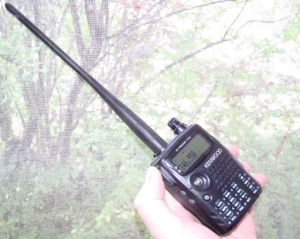

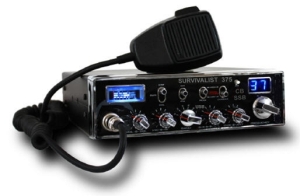
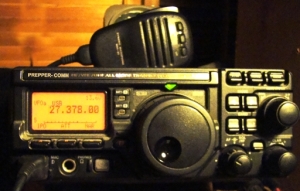


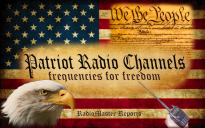

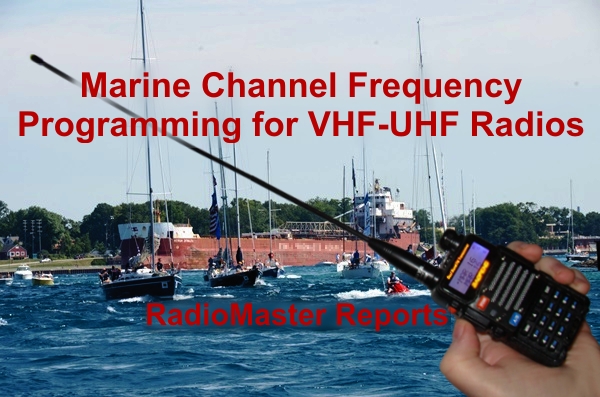

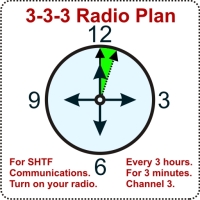

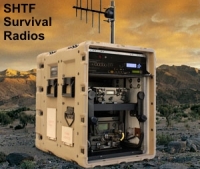
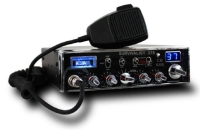
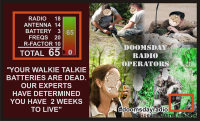


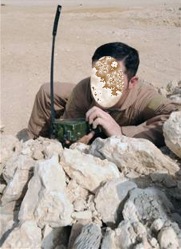


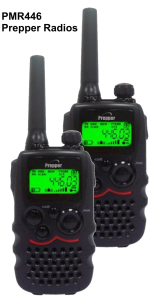

What kind of radio is in the top pic I’ve been looking for this for a year can you tell me were to get one or how makes it or puts it together any information would be a gate help and I & would be in your debt
It is a custom-built unit in an SKB transportable rack case with VHF, UHF, and HF ruggedized radios installed. These radios are interconnected with an interface providing audio, PTT, remote control, field phone, and POTS telco autopatch. Various antennas are deployable with it. The antenna shown is a wideband portable VHF/UHF LPDA beam. The photo was taken near a desert BOL.
Please email me the details of model, construction, etc. on that interface and antenna.
How about info on this set up?
A new programming file for the SHTF Survivalist Radio Frequency List has been added.
The file is compatible with Chirp and other programming software. It is available for free download.
See above article. https://radiofreeq.wordpress.com/2013/06/29/shtf-survivalist-radio-frequency-list/
Pingback: Tailes from a Prepper - Ham Radio Q&A | Tails from A Preepper
What mod would allow Tx on these “outside” channels? Is this what people call the Mars/Cap mod?
General coverage transmit mod. Freq Mod. Frequency mod. Often known as a MARS/CAP mod.
What do you use to create your shtf sheets? I like the design and layout but I’d like to add a few things local to us.
Here’s the method we use for RadioMaster Reports. The process isn’t simple but it produces desired results of high quality.
Radio frequencies start as handwritten notes, gathered over the years from various sources, correspondence, communicating on the air, monitoring and other methods (which won’t be described here).
Periodically, these are added to lists in text files with notes. Text files (*.txt) are then edited in Notepad++, and imported/copy/pasted into Excel and manually formatted (labels, columns, rows) for Chirp import compatibility. Chirp CSV files have a certain number of data fields and labels on each line. From Excel, CSV files (*.csv) are exported. A CSV (Comma Separated Value) file is basically just a text file where each field or entry of the text or data has commas, line feeds, spaces, tabs, or other characters as delimiters. CSV files can be opened/read by spreadsheet or database programs and radio programming software.
The test CSV files are imported into Chirp. Chirp is connected to various test radios, and these radios are programmed and checked manually (either on the air or into dummy loads). Any bugs found with the programming are fixed, and then updated in Chirp and the radios are re-programmed again with the de-bugged file, and this repeats again as many times as necessary until the programming works perfectly. The de-bugged CSV files are exported from Chirp. These CSV files are uploaded to the RadioMaster site and made available to the public for download.
A completed CSV file is then imported into Excel. The columns, rows, and data are edited, re-sorted, and titles are renamed for concise readability. Any columns that are not needed are deleted. The output is copy/pasted into a web html program and a content manager for web listing as a table on the site. The images are made by screen-capture of tables in a browser and using an image drawing program, which is manipulated and output to a file in *.PNG format. All these are uploaded to the site via a web content management program (wordpress) and either Dropbox or FTP.
We hope this description was helpful.
Pingback: Radio Stuff | portable hf antenna
Pingback: SHTF Survivalist Radio Frequency Lists
I have to say the PRC-25 is a low power VHF radio that puts out only about 3 Watts on a good day and they are heavy when compared to civilian radios. You’re better off with Non-Surplus radios that are Non-Military.
Pingback: The First $2000 (for the Prepper) - Toyota FJ Cruiser Forum
Well I searched for the article title and discovered this,
great read
My brother recommended I might like this blog.
He was entirely right. This post truly made my day.
info! Thanks!
Thanks for the article. I’m new to amateur radio, and I’m constantly amazed at how it can be customized to nearly any use or need. What a cool hobby!
You mentioned a PL of 151.4 on the FM frequencies. I’m assuming that you mean this is the CTCSS that preppers/survivalists use on those channels. Have I understood that properly? If so, does this apply to all the FM frequencies you’ve listed?
Thanks again.
On FM, the use of transmit PL tone 151.4 Hz is intended to be for situations where you are communicating with mil radios having Tone Squelch (older military surplus “green” radios). It does not apply to all the FM frequencies, ham, FRS, GMRS, etc. or channels of various types of services and FM 2-way radios.
PL tones (CTCSS) for repeaters are various frequencies, dependent upon local settings and the repeater owner preference. There is no standard ham PL tone frequency.
The most common PL tone for GMRS repeaters is 141.3 Hz.
The most common PL tone for FRS and GMRS simplex is 67.0 Hz.
For survivalist SHTF prepper emergency disaster purposes, the best way to set up PL is:
PL tone transmit-only.
The receive setting should be normal carrier squelch (no PL tone).
For more information about use of PL tone on different channels and frequencies, please see:
I am totally new to radio. Looking for someone to help bring me along and figure out how to use the different modes and all the gadgets on my radio. I’m in south florida and my call sign is KM4FED
Pingback: Prepper Charlotte | Extreme - Survival
Pingback: Prepper Guy
Good article. Thanks for taking the time to write this. I’m the Net Manager for the Colorado Connection Repeater System Preparedness Net, on Saturday mornings, 10am local mountain time. I’ll be sure to mention this article on an upcoming net.
All preppers need to understand ham radio too if its your ONLY means of communication in an emergency. On the HF bands people will be willing to answer your call for help in an emergency.
Pingback: Prepper Radio Freqs | Dave Technology and Survival Skills
This was a great read! Using Chirp has made programming a lot easier for me.
146.550 is the national storm spotter SKYWARN frequency.
Pingback: Ham Radio Prepper
Pingback: Tales from a Prepper - Ham Radio Q&A | Back Roads to Roots
Pingback: Ham Radio for Preppers: First Contact & SHTF Applications - Survival By Preparedness
just got a UV-5RHP , there is a UV-5RTP, but find them are same for 5RTP/5RHP, all for Tri-Power 1/4/8 Watt Long Range Transceiver
operating without a license is ok shtf
Bad idea to thing that just because shtf, you are free to operate any radio you want on any frequency you want. Many of us who have licenses won’t appreciate unlicensed individuals operating on frequencies that we had to take tests to gets licenses to operate on. Amateur radio is already struggling with its share of bad operators, many of them being of that “operate where-ever you like” mentality already. Simple truth of the matter is that when shtf, you will want to have coordinated communications. Amateur radio operators regularly participate in coordinated repeater and simplex nets, just to practice proper operating practices just for emergency preparedness purposes. The last thing that any of us want is to have a sudden influx of unlicensed individuals flooding the ham bands and not cooperating with any established emergency communications nets that may already be in progress. I have had many situations in which I’ve been monitoring an emergency traffic net, only to get some guy with a modified CB and no license interfering with the emergency traffic net, and even threatening net control. Such operators are unwanted and only cause strife. Get the license and learn proper operating procedures. In an shtf situation, you will find that having gotten a license and learning to operate in a proper manner is going to carry more weight than just burning up bandwidth because you think it no longer matters.
Also, there is a reason ham radio operators regularly participate in radio location events known as “fox hunting”. We regularly triangulate and report location of unauthorized operators, including fellow hams operating outside of band privileges. Yes, we are very protective of our frequency allocations, we’ve lost too many of them to commercial interests over the years, and have only managed to get a scant few back.
I’m glad someone said it. So many of these people waiting for the end of the world are running out and buy cheap Chinese gear that they don’t know how to use and hy jack our frequencies simply because they have zero respect for others. I’ve been a ham since the mid 80s and I’ve seen so many of these people pop up over the past few years. Down the page KC8ZSQ (who says he a cop on QRZ) actually say he supports unlicensed operators to use someone else’s active call when illegally on the air. None of this would have flown a few years ago. I found this site looking over HF frequencies. All these SHTF people are the primary reason the S has in fact started hitting the fan… because people lIke this have no respect for others.
Some of us have cheap Chinese gear AND are licensed. While I fully agree that unlicensed users are an issue, your constant yammering about cheap radios is uncalled for. They work, they are legal, and allow for people of limited means the ability to advance their radio communication and technical skills. You may recall reading something about that last part.
Chief E … you are SOooo.. CORRECT! When I first got licensed I bought a mobile radio from Japan…. used it a bit…. Then I got one of THOSE cheap Chinese radios….. that HT sees DAILY use. My wife has a license too, so the cheap Chinese radio is used between us when we are out and about… even over the cell phones. AND given the wide brush some of those regulation charlies want to paint others ‘below them’ with. When I first got licensed I was talking with someone in the local club and they were BRAGGING that they had tracked down some foole who was not following the rules. They found the persons house and late at night they climbed his fence, crept to the guy’s tower and put thumb tacks in the coax. “that fixed him!” OK fine, he may or may not have been doing something wrong IDK. BUT here is my issue… the victim radio operator, MAY have done something wrong IDK, I was not in that town when it reportedly happened….. BUT the hams involved DID commit premeditated CRIMINAL acts….. trespass and property damage. There is NO way to justify being criminals to “fix” a perceived wrong.
hello, great site I’m a end of world prepper from United States
.
hi, great article! Thanks for all the SHTF frequency information. I’m a survivalist from upstate New York.
I gotta hand it to ya. By far the best site for prepper and patriot radio stuff. Our group uses the lists and programing in all the bug out radios
Thanx for some new freqs we were not monitoring b4.
In addition to many Skywarn groups using 146.55 simplex, also understand that in many areas of the country hams are still using 146.54 and 146.56 simplex.
“If” you are out in some backwoods area trying to work each other on 146.55, you may get hammered by much stronger base station users from either 146.54, 146.55 (if Skywarn is active on that frequency in your area), or 146.56 simplex. Of course if you identify (with an active callsign), most hams will go out of their way to accommodate QRP signals from 4W handheld radios.
“If” you aren’t licensed, however, expect that hams will eventually find your location, so it had better be a true end of the world event, or the monetary fines can be quite high.
Great point. “If” you’re not licensed then always find an active callsign to use when operating in the ham bands.
Roger, “great point”… REALLY! as a so called law enforcement officer youre saying you would recommend someone using someone elses (which is a form of identity theft) call to illegally transmit on ham bands. Would it be okay for someone with no really experience, training, knowledge or care for the codes and laws to get on the air using your call? You should be ashamed of yourself as an amateur radio operator and a so called LEO. GREAT JOB AT UP HOLDING LAW AND ORDER.
Anyone can transmit from ham equipment during and emergency, and not have to lie about a call sign. But if someone wants to use ham bands and gear they should really go take the tests, get the licenses and real experience. If one cant pass a simple Tech test and pay the $15 fee then that person should really weigh out their priorities in life.
The irony of the name I chose to post under was wasted I fear 🙂
But regarding your comment that, “Anyone can transmit from ham equipment during and [sic] emergency”, where did you find that in Title 47 of the CFR? I know it’s often stated, but I can’t locate it in the regs – can you point me to the appropriate part, subpart, and section?
Hell, it didn’t even cost me $15. One local club offers it for free. And all the answers are provided by the FCC and ARRL. A drunken retarded monkey could pass the thing…don’t ask how I know…
Here in Europe we use the range 6.400 Mhz to 6990 Mhz.
Some are using the 13950Mhz to 13990Mhz
And , of course , the 26-28Mhz
Pingback: Ask Orion – Ham Radio – #BR2ROrion – Back Roads 2 Roots
Pingback: Preppers List of Survival Items (200 Point Checklist)
all you buying all these radioes…. what will you do with them when there is no power or your batteries cant be charged …..build a solar pannel befour you spend all your money on radio equiptment you cant use ..when you get that done then buy good low power radioes that will run for days on solar or wind power generators .. you dont need kilowatts of power on the right frequiencys .. and if there is an atomic attack, most likley your transistors will be cooked anyway ……
The frequency / channel list is great.. look forward to using the frequencies
Pingback: The Best Radios for SHTF | Doomsday Preppers Online
Excellent info. I often find preppers to communicate with on frequencies listed
Pingback: prep guy
Thanks for making this webpage, it helped me a lot with my radios.
Pingback: Survival-ist
Pingback: Two Way Radios Survive
Pingback: battery man
Any chance i could get that csv file?
Pingback: How Will You Communicate After an EMP? | Tactical Shopper
Same here links are broken to dropbox
Links broken for download, anyone have the csv file
Pingback: Prepping Resources
Add CB 24FM Packet Radio (Europe Newsletter via BBS Sat-Internet if possible with S&F)
We should also do a complete bullet proof redefine of AX.25 with DM- and DISC+ only allowed with stateful inspection password-hash, otherwise ignored, same error from faked Frame-Rejects, faked Packetsor with wrong checksum.